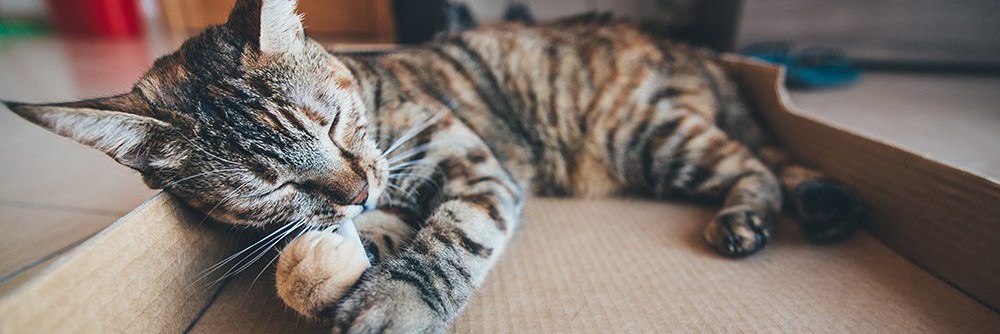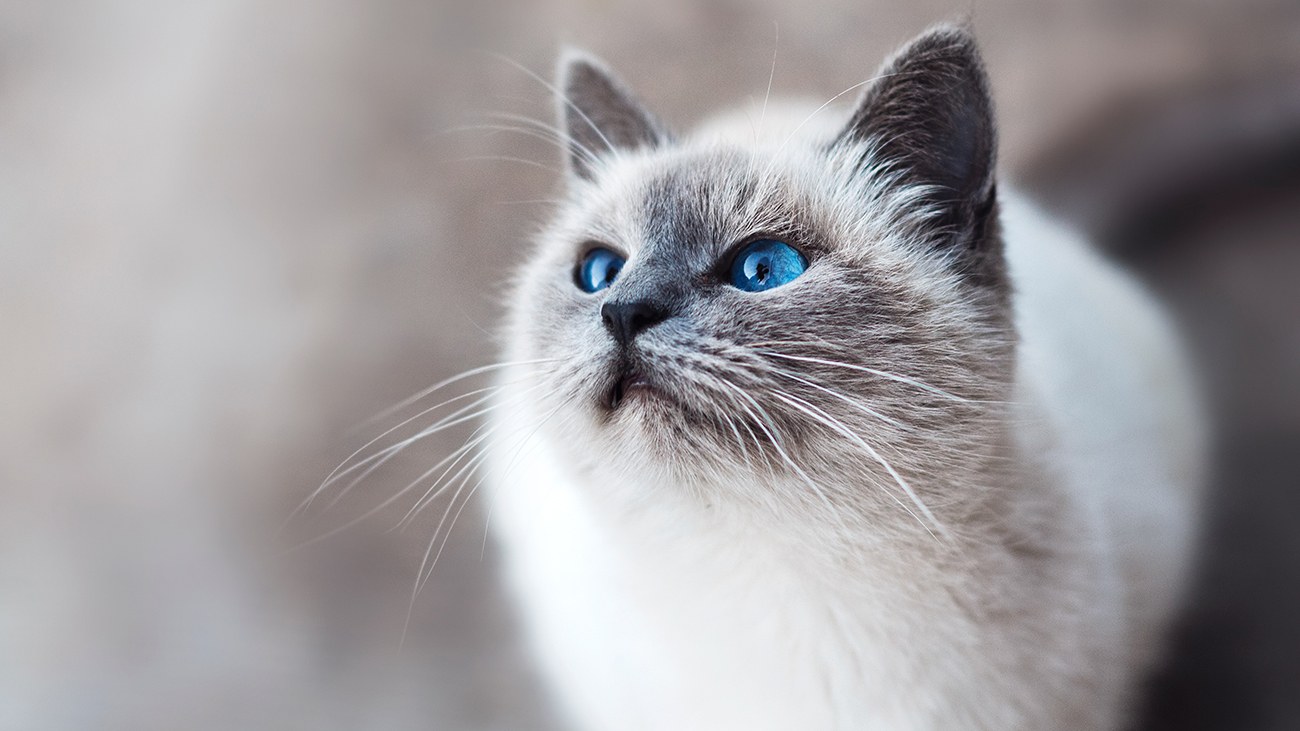1. How old is your cat?
Cats have different nutritional needs at different ages, so consider your cat’s age and lifestage carefully before choosing a food. Kittens need a diet with higher protein than an adult, in order to ensure they have sufficient nutrients for growth.
Seniors need a diet with lower protein than adults, but the protein has to be of a very high quality. This means there’s less ‘work’ for the kidneys to do, but still a decent amount of protein for maintaining muscle mass. Most feline diets are labelled as ‘up to one year’, ‘one year to seven/eight years’ and ‘eight years upwards’.
There are also even more specialized diets out there for weaning, pregnancy, and various stages of ‘senior’ age. ‘Neutered’ diets are also available for neutered cats – these have slightly fewer calories in each piece of kibble, reducing the chances of your cat becoming overweight after being neutered.
Ensuring that you choose a diet that is nutritionally balanced for your cat’s lifestage is essential.
2. Does your cat have any prescription needs?

Prescription diets are amazing things. They’ve been carefully developed in order to support the body through a range of different conditions.
When you come to choose the best cat food for your cat, consider whether they have any conditions that could be helped by a change of diet.
There are diets for cats that are intolerant to ingredients, whether that’s chicken (Purina Pro Plan Sensitive Skin and Stomach has a ‘Lamb and Rice’ flavor) or a whole host of complex things (Hill’s z/d is hydrolyzed to be entirely hypoallergenic no matter what your cat’s allergies are).
Some prescription diets are formulated to include supplements so that these don’t have to be given separately- these include diets for stressed cats, arthritic cats, or cats that suffer from hairballs. Some prescription diets even make such a huge difference that they sit right on the borderline between food and medicine – this is the case of urinary diets designed to dissolve bladder stones, and renal diets designed to support the kidneys.
Don’t forget to consider whether your cat is at an ideal weight – although many diets come in a ‘lite’ or ‘diet’ version, there are prescription diets especially formulated to achieve healthy weight loss. These diets can make a huge difference to the lives of overweight cats.
3. How easily can you get the food?
It might seem a little daft, but choose a food you can get hold of easily. If it’s stocked by the local pet shop – great. If not, can you get it online? Is shipping overpriced? How many stores stock it? The last thing you want to do is to choose a food that your cat loves, but that you can’t get hold of.
Sudden changes in diet (such as ‘oops, we’ve run out and it takes a week to reach us in the post’) can cause cats to stop eating or have diarrhea, so this is an important consideration when choosing the best cat food for your cat.
4. Wet or dry? Dental? Raw?

The wet/dry debate has divided vets, cat-owners and nutritionists for years, and the truth is that there are benefits to both types of food. Dry food is easy to feed, leaves less mess, is less likely to go off, is cheaper, and has some dental benefits.
Wet food is preferred by the majority of cats, and contains extra water, which has benefits for the kidneys and the entire urinary system. Dry cat food generally contains more carbohydrates, which aren’t needed by cats and can make them prone to diabetes.
Wet food may contain less valuable sources of protein whilst looking more appetizing to us. The truth is, as long as your cat doesn’t have a medical problem there’s no right or wrong answer here, and many people choose to feed both wet and dry cat food. The evidence for dry food being better for cat’s teeth, however, is somewhat overstated.
The majority of dry food is probably no better for cat’s teeth than wet food, but the dental diets produced by Purina Pro Plan, Hill’s and Royal Canin have all been accepted by the Veterinary Oral Health Council (VOHC) as having sufficient evidence that they actually help to remove tartar and break up plaque. Hill’s Science Diets also have the inbuilt dental-cleaning kibble alongside their other benefits.
My advice? Feed a mixture of both. But since, in general, dry cat food is so much cheaper, spend a little extra on a really high-quality dental diet so you’re maximizing the benefits of the dry food. Then feed wet food as the majority to keep your cat’s water intake up.
Raw food is a whole can of worms in itself. Raw food has some stated benefits, and there’s no doubt that lots of cats love it, but there are some major bio-hazards we vets worry about. After all, we humans learnt to cook our food because this kills most bacteria and parasites that can harm us.
We’re brought up on tales of under-cooked barbecue food killing people, or sushi causing horrible parasites – but we sometimes forget that these scary things apply to our pets, too. There have been many cases of cats catching tuberculosis that have been linked to the feeding of raw food.
There have also been cases of people becoming ill from handling and preparing their cat’s raw food. So whilst I can see the attraction of a more ‘natural’ diet, I’d caution that nature isn’t all that nice, and that if you want to go down the route of something a little ‘purer’, it might be better to go for something lightly steamed.
5. Is the food WSAVA-compliant?
This is the kicker. Fad diets are fast moving to the pet food industry, and there are a lot of fad diets out there that are not nutritionally balanced that could do long-term damage to our cats.
Most vets advise that you seek out a diet that meets the WSAVA guidelines. The WSAVA (World Small Animal Veterinary Association) set up a Global Nutrition Committee to come up with some ways to improve the nutrition of our pets.
After much debate and reading research papers, they came up with several recommendations, including this list of questions to assess the quality of any food. It takes a little legwork – phoning the manufacturer and asking some questions – but it enables you to hear from the horse’s mouth the quality of the food you’re feeding.
BONUS TIP: It’s not just about what you feed – it’s also about how you feed it! Consider using interactive feeders.
Looking for more information? Try this link for tips on how to recognize a good source of information, and a list of good websites to read more about feline nutrition.
Did you find this article helpful?
